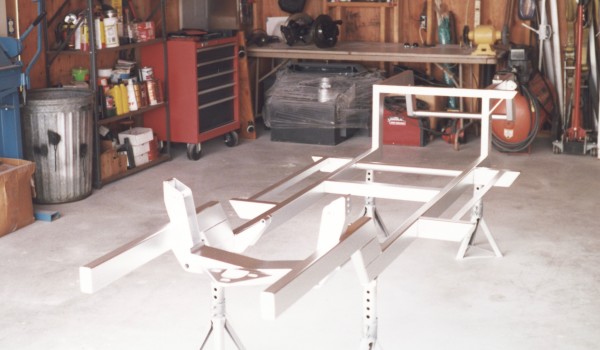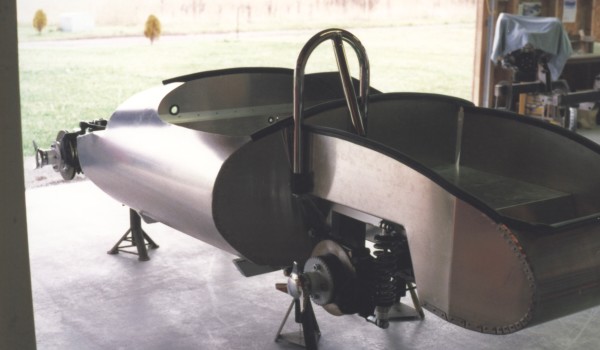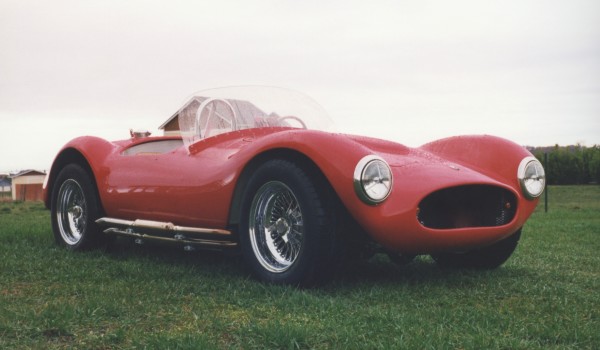The Physics
With perfect 50/50 weight distribution, race quality suspension components, and low vehicle weight, the Barchetta 3500 is a very potent road race car.
We’ve taken 1st place in two different autocross, slalom events in our prototype – with street tires and a borrowed helmet – against full-blown race cars with slicks and experienced drivers.
Physics Lesson
Any race car driver will tell you that what makes one car out-perform all the rest on any given track is lightness. Weight is the number one enemy of any race car designer.
Weight and horsepower are interchangeable, if you have more of the first you need more of the latter to maintain the same acceleration numbers, not to mention bigger brakes (more weight), a heavier chassis, transmission, differential, etc. Before you know it you have a 3000 lbs “sports car” that needs a 400+ BHP to perform at all. This is a lesson taught well by Lotus, McLaren, and Porsche.
The Barchetta 3500 at 1600 lbs with the small motor (270 BHP) gives a HP to weight ratio of 5.9 lbs. per HP. Compare to a Porsche Turbo at 8.1 lbs per HP, or even a Porsche GT2 at 6.2 lbs per HP.
Ask yourself what does a Porsche GT2 cost? The Barchetta 3500 with the big Rover V-8 (4.6 L), will make around 330 BHP. This equates to a weight ratio of 4.8 lbs per HP, which compares quite well to a McLaren F1 at 5.2 lbs per HP, or a Ferrari F50 at 5.6 lbs per HP.
Keep in mind, these are million dollar machines we are talking about. Car #003 was built with a small block Chevrolet that dynode at 455 BHP and 505 ft lbs. of torque. This car weighed 1800 lbs due to the iron block which gives it an incredible HP to weight ratio of 3.9 lbs per HP. Its owner Mr. Lon Packard claims he can do 0 to 60 MPH in around 3.2 seconds, and the performance of the car still shocks him!



